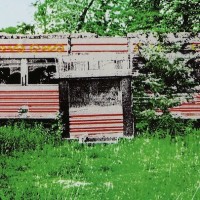 So today we open up a new series “Deep Cuts,” where your friendly music guides here at Something Else pull out and call attention to a more obscure track taken from familiar, sometimes classic, records. If you’re like us, you’re more of an “album” guy than a “singles” guy and like to find those hidden treasure waiting to be uncovered by those who venture beyond the popular tracks on the long-player. We’re here to help you find some of them. Think of “Deep Cuts” as a subset of the venerable “One Track Mind” series, the non-hits that stand alongside the hits.
So today we open up a new series “Deep Cuts,” where your friendly music guides here at Something Else pull out and call attention to a more obscure track taken from familiar, sometimes classic, records. If you’re like us, you’re more of an “album” guy than a “singles” guy and like to find those hidden treasure waiting to be uncovered by those who venture beyond the popular tracks on the long-player. We’re here to help you find some of them. Think of “Deep Cuts” as a subset of the venerable “One Track Mind” series, the non-hits that stand alongside the hits.
The first one is by one of our favorite guilty pleasures, Hall And Oates. Although I think I said this sometime before, there is really no shame at all in liking most of their seventies output. Last week came the release of yet another H2O “greatest hits” collection, the sweeping, Sony/Legacy 74-track box set entitled Do What You Want Be What You Are: The Music of Daryl Hall & John Oates. The 1976 song that gave the collection it’s main title seems an odd choice, given that the song, while released as a single, didn’t fare all that well on the charts. People will still remember the other single from Bigger Than The Both Of Us, “Rich Girl,” but “Do What You Want, Be What You Are” just didn’t have a lasting impact.
Why it didn’t have a lasting impact, I’m not quite sure. “Do What You Want…” was a well-conceived Philly-soul song at a time when songs produced by Thom Bell and Gamble/Huff were still dominating the r&b airwaves. The gracefully descending and ascending chord changes, the lurking strings, perfect harmonies…it’s gives “Sara Smile” a run for its money. But let’s not forget Daryl Hall’s lead vocals. His control and command is so evident as he effortlessly changes his tempo, emphasis, and transitions in and out of falsetto. Today that’s called “histrionics,” but let’s face it, some songs call for full-on belting out, and Hall seized on the opportunity. A little rock-styled guitar provides a the touch of “rock” to Hall & Oates self-described “rock and soul” characteristic, and the no-nonsense bass line keeps the song well tethered to its melody.
Maybe the “Do What You Want, Be What You Are” creed promoted on the song so typical of the “me” decade sounds a little outmoded today and doesn’t relate to 21st century listeners? Could be. What counts is that the music contained within has a lasting quality. You don’t hear soul this soulful these days.
- Nick Millevoi – ‘Moon Pulses’ (2024) - April 23, 2024
- Cannonball Adderley – ‘Poppin’ in Paris: Live at L’Olympia 1972′ (2024) - April 20, 2024
- Christian Marien Quartett – ‘How Long Is Now’ (2024) - April 18, 2024



